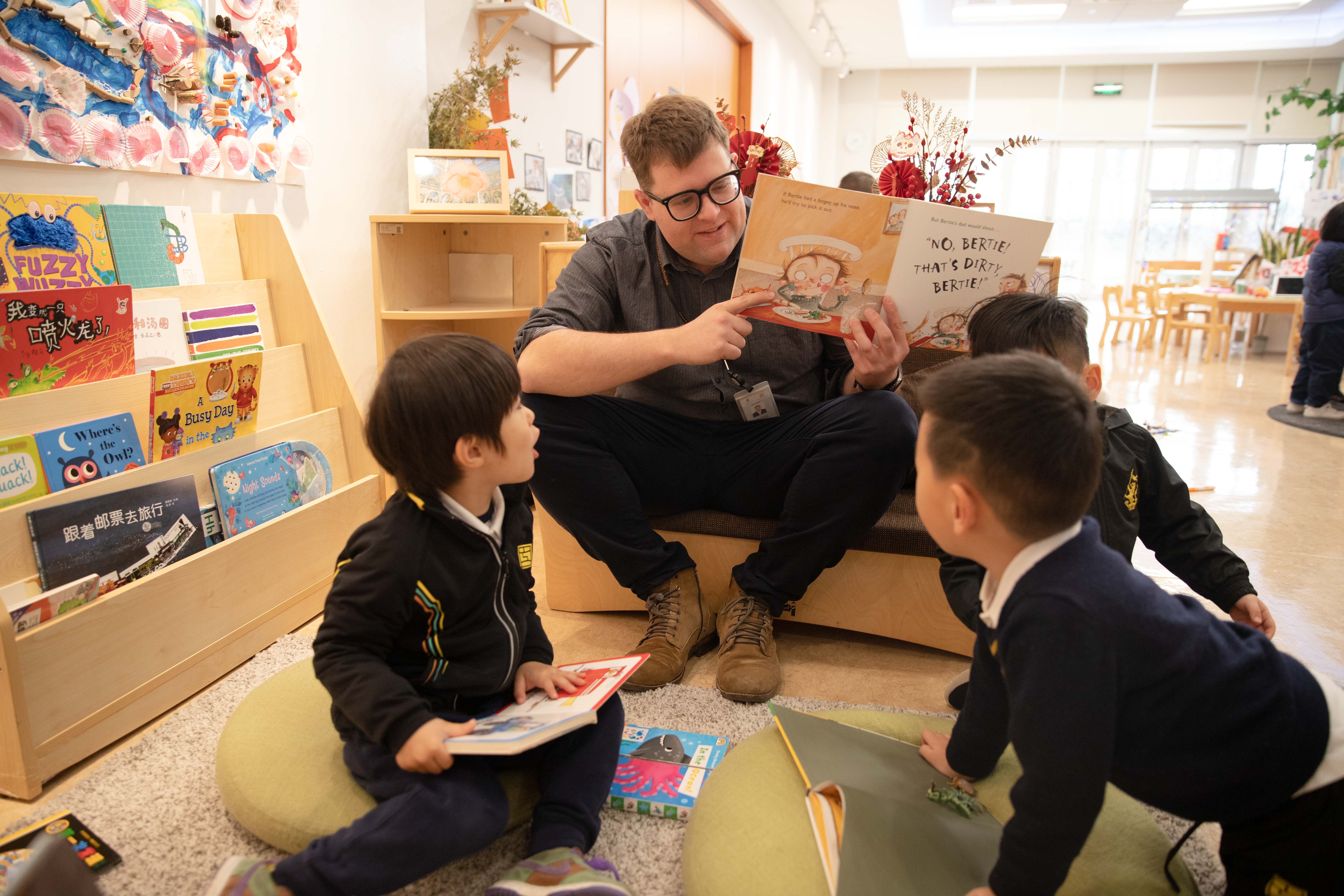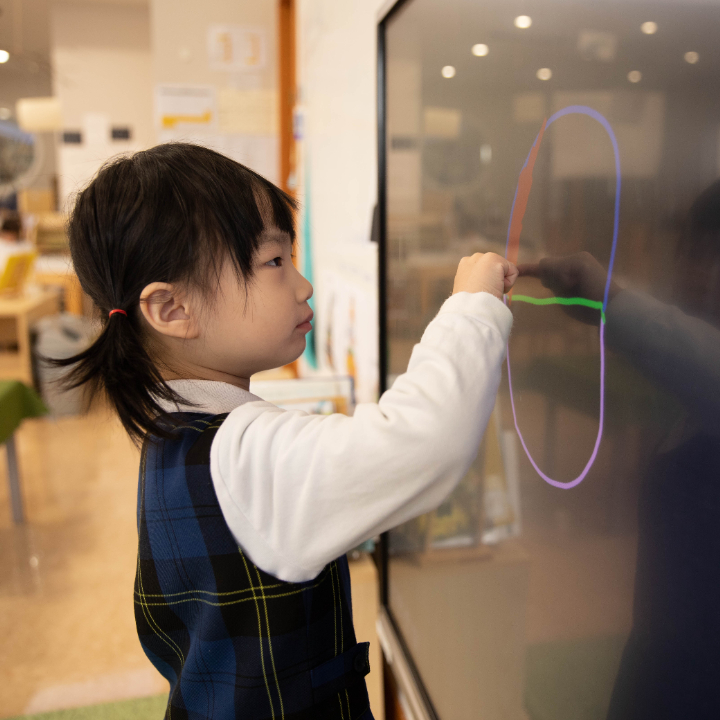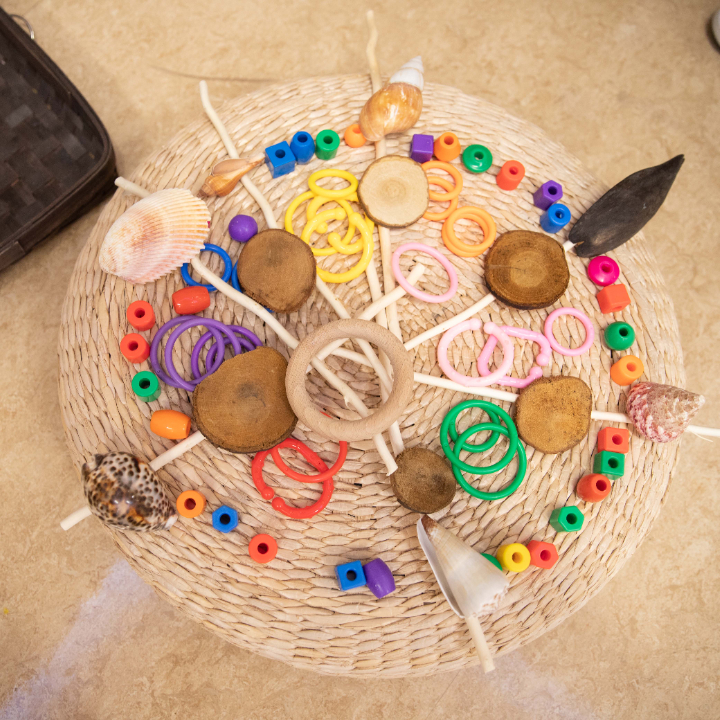
How do we define bilingual learning?
Setting the foundations for bilingualism in our young pupils is central to our entire early years’ approach, from the staffing of teams to the rhythm of the day and the environments in which they play. The steppingstones which enable our children to express themselves, understand others, think and be confidently literate in both Chinese and English are set from the beginning of their time in Huili Nursery Hangzhou. Each nursery class has a team of two partner teachers.

Strong attachments and positive relationships with their educators are key to developing language and communication skills for young children. To support this in multiple languages, the interactions they share are meaningful and reflect what our children already know about the world.
Our learning spaces are carefully crafted to inspire curiosity in our pupils. We encourage them to express their feelings and follow their enquiries. Our international educators always look for ways to prompt the children to practise a new English word or phrase or use their Chinese to discuss concepts at a deeper level. By hearing and then applying new vocabulary in play-based situations.
How do we define our unique approaches to learning?
Learning is constantly developed through play-based activities. These are centred around a range of projects where pupils are invited to share their knowledge and, with the help of the adults, research what is important to them in greater depth.



Ensuring the most effective Early Years approach for our pupils, we have merged the English Early Years Foundation Stage and the Chinese Curriculum (from three to six years) guidelines. The result is an encompassing curriculum and Huili framework for teaching and learning.
There are seven areas of learning and development that shape our educational programmes. These are comprised of three prime areas and four specific areas. Moreover, as a bilingual nursery, we work towards learning outcomes in communication and language and literacy in English and Chinese.
Huili four guiding principles:
1. Every child is unique. They are constantly learning and can be resilient, capable, confident, and self-assured.
2. Children learn to be strong and independent through positive relationships.
3. Children learn and develop in enabling environments where their experiences respond to their individual needs, and there is a strong partnership between practitioners and parents.
4. Children develop and learn in different ways and at different rates.
How do you create an inspiring environment?
Within our nursery, we aim to provide caring and inspiring learning spaces built on positive relationships and develop the whole child emotionally, socially, physically, and academically. As well as offering a wide range of learning opportunities, the continuous provision of resources available to pupils allows for independent accessibility and the teaching of new skills in culturally meaningful contexts.
For our learning spaces to foster life-long learners, we use a child-centred approach with a balance of adult-led and initiated activities with enhancements and provocations to extend thinking, communication and language and to practise and embed skills such as literacy, mathematics and scientific enquiry.

Invitations to play, which are over and above the continuous provision in the indoor and outdoor spaces, help provoke new learning and motivate children to think deeply and solve problems independently. These are chosen to either respond to children’s interests and/or promote and introduce new vocabulary, concepts and specific skills.
Our outdoor spaces are designed to offer huge potential to foster children’s Characteristics of Effective Learning in nature and surroundings. Outdoor learning lets pupils run, climb, and explore in ways that are not always possible in their everyday lives. Teaching and learning actively outdoors helps them develop a strong sense of independence, physical strength, and sensitivity to their surroundings.
Environments are designed to encourage pupils to make connections in their learning. A balance of quiet, reflective spaces and areas with open-ended materials reveal their existing knowledge and inspire them to think creatively.